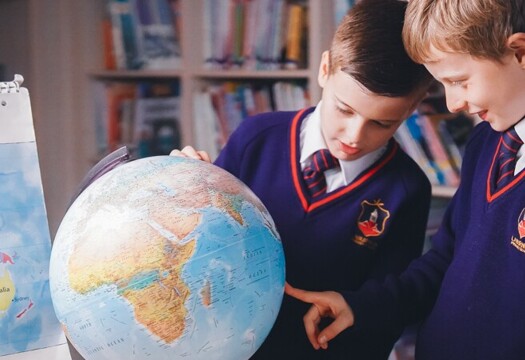Geography
Our Geography curriculum follows the content and sequencing of the Primary Knowledge Curriculum (PKC), which has been designed to be both knowledge-rich and coherently sequenced. This means that the knowledge pupils gain is carefully specified, ordered logically, and builds progressively over time. A strong geographical understanding relies on firm foundations of knowledge and skills, which are developed systematically throughout the primary years. In the Early Years, children explore their local area, community, and transport, comparing past and present and learning about global journeys. They develop mapping and spatial skills, identify key locations and features, and gain awareness of different environments, habitats, and where food and animals come from, while learning about people, places, and human achievements locally and around the world. This approach helps pupils deepen their understanding of physical and human geographical processes, fostering curiosity, critical thinking, and a fascination for the world we live in.
Conceptual understanding is at the heart of this curriculum. Children learn about key geographical concepts such as place, space, the environment, and interconnection. Over time, through an essential process of elaboration, they add to their conceptual understanding with many examples of geographical knowledge in context. Pupils become more skilled at answering questions such as:
- What is it like to live in this place?
- What are the challenges of this environment?
- How have people changed this landscape over time?
Children also develop an understanding of what geographers do, what they look for, and what they may say about a place. They encounter notable explorers such as Ibn Battuta, Roald Amundsen, and Captain James Cook, and examine the migration of both animals and people, exploring the impact of migration and colonialism on places such as Australia and New Zealand.
Each year begins with a ‘Spatial Sense’ unit, explicitly teaching essential geographical skills such as locating places on a map, using symbols, interpreting scale and climate graphs, reading coordinates, understanding population data, and identifying elevation on relief maps. These skills are then applied throughout the year to study people, places, and environments. Spatial Sense units build on prior knowledge and increase in challenge progressively. In Key Stage 1, pupils use observational skills and fieldwork to explore their school and local environment. In Year 5, they undertake further local fieldwork, observing, recording, and presenting human and physical features while exploring a local environmental or social issue. The aim is to build pupils’ geographical literacy so they can confidently use maps, atlases, and geographical data to answer questions about the world.
British geography is studied every year, with knowledge building incrementally. Pupils begin with an overview of the countries of the UK, then study specific regions in depth, including the South West, South East, Yorkshire and Humberside, the Midlands, and Northern Ireland. They examine physical and human characteristics, key topographical features such as hills, mountains, coasts, and rivers, how landscapes have formed over time, and how environments are used today.
European geography is introduced in Years 2–4, covering regions, climate, trade, industry, landmarks, physical features, and contrasting environments. Pupils interpret maps, diagrams, and climate graphs, and make comparisons with their local area. Studying Europe in detail also provides contextual knowledge for other subjects, such as History. Alongside the UK and Europe, pupils study world geography, focusing on continents including North and South America, Asia, Africa, Australia, New Zealand, and the South Pacific Islands. They explore physical geography, including biomes, rivers, mountains, volcanoes, and earthquakes, alongside human features such as settlements, land use, trade links, and natural resources.
In the summer term of Year 6, pupils study globalisation, applying knowledge from across the geography curriculum. Using global data, including Geographical Information Systems, they explore social, economic, and political interconnections, reflecting on the benefits and challenges of globalisation and considering the importance of sustainability and equity in human interactions with the environment.
By the end of primary school, pupils have a thorough understanding of diverse places, people, and environments. They are equipped to think critically, make connections between regions and global issues, and recognise their role as responsible global citizens. The curriculum not only fosters a love of geography but also ensures that pupils leave primary school with the skills, knowledge, and curiosity to continue exploring and understanding the world in secondary education and beyond.
